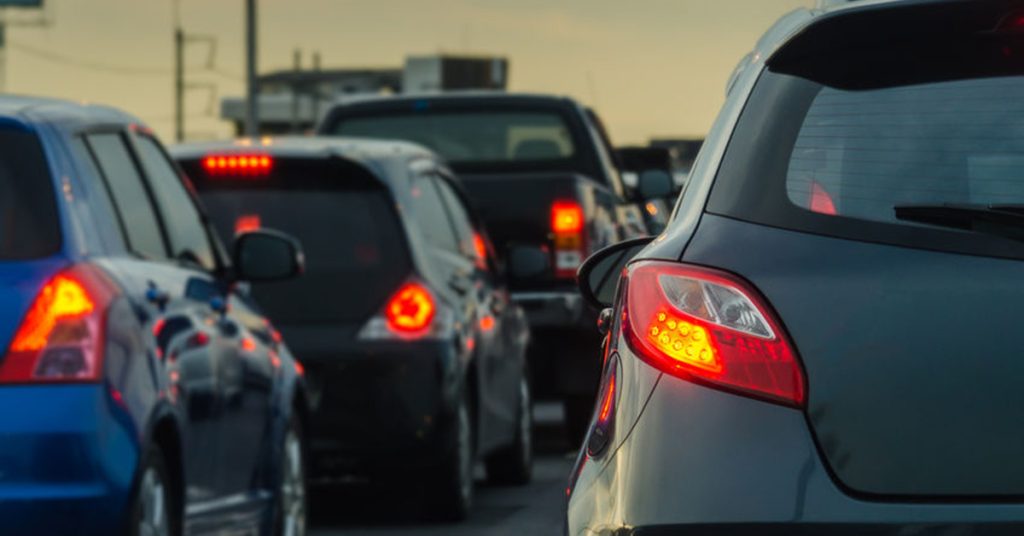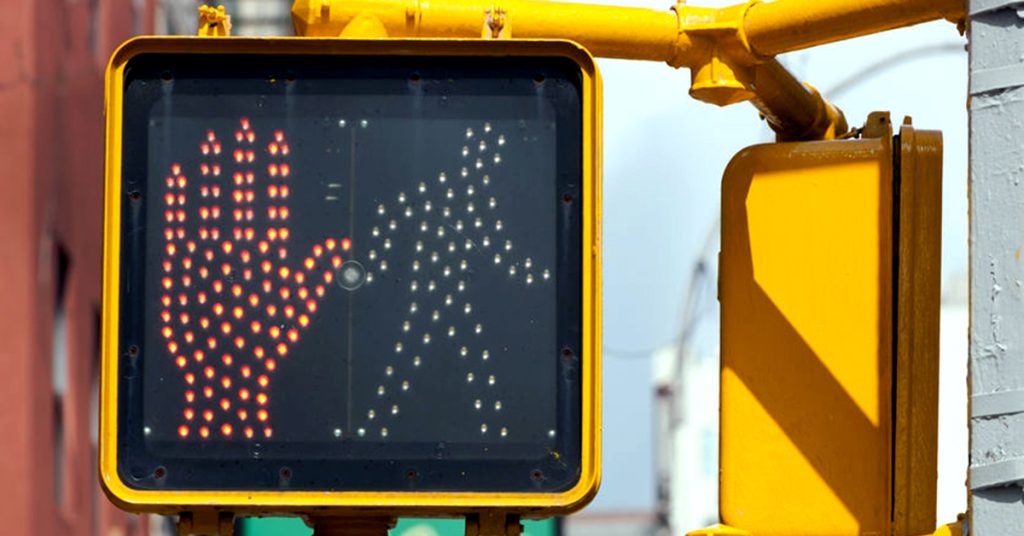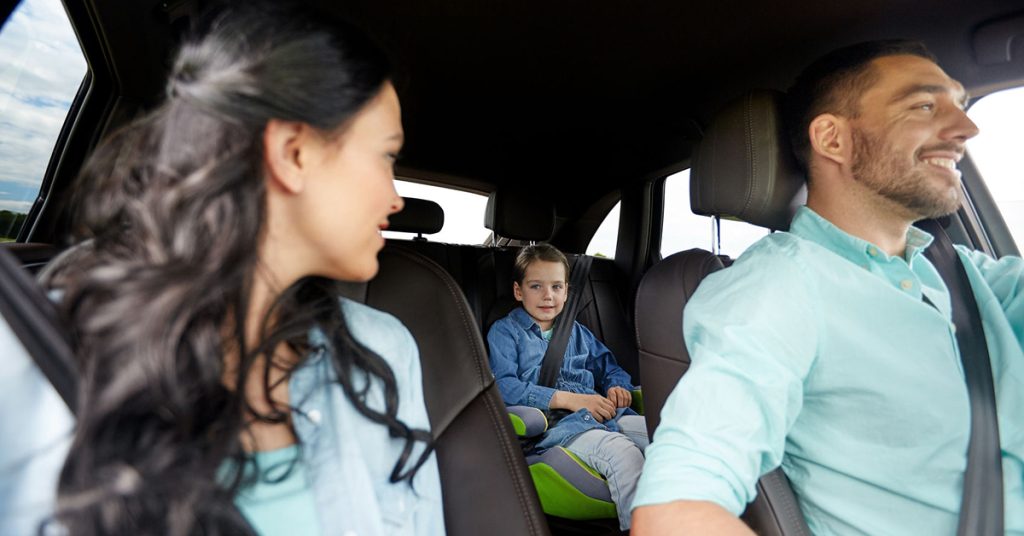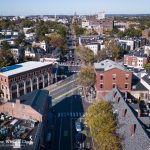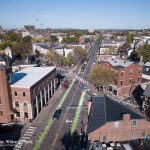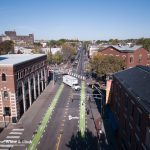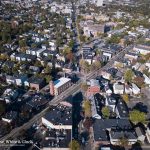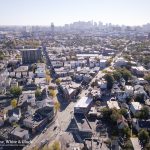Posts Tagged ‘Cambridge car accident lawyers’
Keeping Your Massachusetts Auto Insurance Policy in Good Standing During COVID-19 Emergency
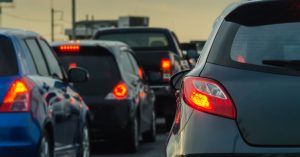
Save yourself time and frustration. Our tips for keeping your Massachusetts auto insurance policy in good standing during the COVID-19 state of emergency.
Be proactive and keep your auto insurance policy in good standing during the COVID-19 emergency. When you move or cannot make payment, let your auto insurer know in advance. This will save you a great deal of time, frustration and money during an already stressful time.
First, some news on a small savings. Due to a decrease in driving, many insurers have committed to giving Massachusetts drivers a 15 percent discount for April and May (roughly $30 in savings on a $1,200 policy), according to The Boston Globe. Not a large savings, but you don’t have to be proactive here. Just look for the credit to appear on your premium statements or a rebate check to arrive in the mail.
How Auto Insurance Works For You
Auto insurance is a critical tool in protecting yourself and your family from injury and major financial loss in a car accident or truck crash. If you were negligent in a car crash, you need to have coverage to financially compensate any victims for their medical expenses and other losses. This protects your other financial assets.
When another driver is at fault and causes your injuries, you should be entitled to seek compensation from their auto insurance policy. What’s unfair is this coverage may not be available if the driver is uninsured or is underinsured and has only purchased the state’s minimum requirement for compulsory coverage.
Many drivers should also purchase optional coverages to protect themselves. Read more in our article, “Understanding and Buying Massachusetts Car Insurance.”
Keep Current with Auto Insurance Billing
If you are unable to pay your auto insurance premium, notify your insurance agent or insurer in advance of your payment date. Auto insurers have the right to cancel your policy for non-payment and they can do so in short time. This can lead to extra fees and take up a lot of your time. The worst scenario is if you are stopped by a police officer when your auto insurance has lapsed. You could be fined and your license could be suspended, adding another layer of time and frustration.
Avoid this stress. Call your insurer and request a payment extension. The Massachusetts Department of Insurance has advised insurers “to work with consumers to be flexible and make every possible effort to avoid policy cancellation.” Read this advisory.
And if you don’t have electronic access to your auto insurance policy, ask about setting it up now so you can monitor your account.
Update Your Address
The Massachusetts Department of Insurance calls this “the single most important thing you can do to protect yourself from a claim denial.” Your insurer sets your premium in part based on your address and the risk of collision there. If you don’t update your address, your insurer may still pay claims for your compulsory coverage. Very likely they will deny claims for your optional coverages.
If you have moved or returned home from college, notify your insurer that you have changed your address and are garaging your vehicle in a different location. Your insurance company may (or may not) provide you with some leeway up to 30 days. Regardless, update your policy immediately. You also have an obligation to update your motor vehicle registration and license and you can do this online.
Don’t own a car? Remind your family members to add you back to their policy.
Reconsider Your Coverages
As Massachusetts looks to reopen, some workers will telecommute. Still, we urge you not to reduce your auto insurance coverages to save money. Not yet. But start a conversation with your auto insurance agent about your current coverages and if they meet your needs.
Start by asking about your optional coverages. Specifically, do you have enough MedPay coverage? And do you need more underinsured and uninsured coverage? A note, if you can only raise one, purchase more MedPay, which will help pay your medical bills. For a few dollars, you can increase your coverage by $10,000 or more and this makes a big difference). Then consider raising your underinsured and uninsured coverages as well. If you do, make sure you purchase the same amount of bodily injury coverage.
If you are spending more time on a bicycle, we urge you to wear a helmet first and foremost. You will also benefit by adding auto insurance coverages to help with your medical expenses and other losses. You may be able to add coverages to your own auto insurance policy or to a household policy. Read our article, “What Every Massachusetts Bicyclist Needs to Know About Car Insurance.”
Going forward, if you transition to working at home more, monitor your mileage. You may be able to request a low mileage discount and save money without losing any coverage.
Also, consult your insurance agent if you begin driving as part of a new job or as an independent contractor for a restaurant or business. If you are in a car accident while making work deliveries, your private passenger auto insurance policy will not cover you.
The Massachusetts Department of Insurance advises drivers and businesses to ask their insurers about endorsements for delivery drivers during the Massachusetts COVID-19 state of emergency. Read the state’s advisory, “Insurance FAQs During COVID-19 Public Health Crisis.”
About Breakstone, White & Gluck – Boston Car Crash Lawyers
Breakstone, White & Gluck is consistently recognized as a top-rated personal injury law firm in Boston. With more than 100 years combined experience, our attorneys have assisted thousands of car accident victims in Boston, Cambridge, Quincy and across Massachusetts. We have a track record of successful results covering nearly 30 years.
For a free legal consultation, contact Breakstone, White & Gluck at 800-379-1244 or 617-723-7676. You can also use our contact form.
Beware: The Most Dangerous Pedestrian Street Crossings in Massachusetts
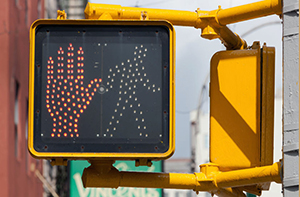
Pedestrians walk safer in Massachusetts communities which utilize pedestrian traffic signals to reduce the risk of crashes.
Pedestrian safety is always an important topic. But in Massachusetts, the topic is most critical during the winter months, when a large number of pedestrian accidents happen.
First, everyone on the road – drivers, pedestrians and cyclists – must use reasonable care and follow traffic laws. Then, take another careful look at intersections and school zones you travel through. Read traffic signs and find the crosswalk markings. They may not be as visible during snow conditions, at night or when a large truck is in the next lane. Make sure to stop well before the crosswalk.
Under Massachusetts law, pedestrians have the right of way when they are in a crosswalk and the “Walk” signal is operational. When there is no signal, drivers shall yield the right of way to pedestrians.
Finally, learn where pedestrian accidents and crosswalk accidents have happened in Massachusetts. Read the list below and take away any insights you can to protect yourself, older parents and young children.
Lynn
From 2007 to 2016, the Massachusetts Department of Transportation (MassDOT) reported the highest numbers of pedestrian crashes were in Lynn. The downtown area – the roads along Washington Street, Central Avenue and Union Street – saw a total of 321 pedestrian crashes, including 223 incidents which resulted in injury or death. There were another 98 crashes without injuries.
Chelsea
The area approaching the Tobin Bridge saw 260 pedestrian crashes over the same decade. The crash cluster included Chestnut Street, Cherry Street, Ash Street and Everett Avenue. These reports included 192 pedestrian crashes resulting in injury or death and 68 other incidents with no injury reports.
Fall River
MassDOT reported North Main Street and surrounding streets had the third highest number of pedestrian accidents. There were 143 pedestrian injuries and deaths. This cluster included North Main Street then stretched over Interstate 195 to Columbia Street, Hope Street, down to Peckham and Palmer streets.
Cambridge
Central Square is one of the busiest pedestrian walking areas in all of Massachusetts. Central Square and nearby streets ranked fourth for pedestrian accidents in Massachusetts. With 143 total crashes, this cluster includes Lansdowne Street and Hancock Street. This area is near the Central Square T stop, bus services and Cambridge city services.
Boston
With 134 pedestrian crashes, a stretch of downtown Boston ranked fifth for the most pedestrian accidents. This area included Boylston Street to the Mass Turnpike, Route 93 and Frontage Road. There were 84 crashes resulting in injury or death.
New Bedford
This Bristol County community saw 82 pedestrian crashes between Route 6 and Hawthorne Street, which is near the waterfront and Buzzards Bay. Of these, 65 crashes resulted in death or injury.
Quincy
There were 77 total crashes which injured pedestrians in downtown Quincy between 2007 and 2016. These pedestrian crashes happened along Hancock Street, between Elm Street and the corner of Washington Street corner. This area sits near Quincy City Hall, the Thomas Crane Public Library and National Park Service.
Worcester
85 Worcester pedestrian accidents were reported in a cluster of streets along Francis J. McGrath Boulevard. These streets included Southbridge Street, Charleton Street and Sycamore Street. Injury was involved in 55 of these Worcester pedestrian crashes.
New Bedford
Along Acushnet Avenue and Sawyer Street, approaching Interstate 195, there were 72 pedestrian accident reports. Of these, 55 pedestrian accidents involved injury or death.
Somerville and Cambridge
There were 69 pedestrian crashes reported in the traffic cluster around Davis Square in Somerville, just along the Cambridge border. Davis Square is where Highland Avenue converges with Holland Street, College Avenue, Dover Street and Day Street. Just a mile from Tufts University in Medford, Davis Square is an ideal commuter location, with an MBTA Red Line subway service into Boston and Cambridge.
About the Data
This data was published in the MassDOT 2016 Top Crash Locations Report, December 2018.
About Breakstone, White & Gluck
At Breakstone, White & Gluck, our attorneys provide experienced representation to those injured by negligent driving, including in pedestrian accidents and bicycle crashes. If you have been injured, learn your rights. For a free legal consultation, contact our attorneys at 800-379-1244 or 617-723-7676 or use our contact form.
Preventing Injuries: Check Your Seat Belts and Child Passenger Safety Seats
 There is nothing more important than protecting your family and other passengers in the car. Many of us drive less often in the winter in Massachusetts. But in a few weeks, families will be back in the car more for afterschool sports, activities and weekend trips.
There is nothing more important than protecting your family and other passengers in the car. Many of us drive less often in the winter in Massachusetts. But in a few weeks, families will be back in the car more for afterschool sports, activities and weekend trips.
Take a few minutes now to inspect your vehicle’s seat belts and child passenger safety seats. Make sure this equipment is working and properly adjusted to fit each child. Replace car seats if your children have outgrown them. Then talk to your family about the importance of always wearing a seat belt.
Dangers on the Road for Children
- Roughly 3 children in the U.S. die each day as a result of motor vehicle accidents, according to the National Highway Traffic Safety Administration (NHTSA).
- Car accidents increased 5.6 percent nationwide from 2015 and 2016. Child deaths in motor vehicle accidents increased 8 percent.
- Children were occupants in 74 percent of fatal car accidents in 2016. They were pedestrians in 20 percent of cases and were on bikes in about 5 percent of cases.
Seat Belt: Buckle Up, Every Ride
Your car should have working seat belts. Do a visual inspection and also sit in each seat while buckling up. If your seat belts are not working, call your auto dealer to have them repaired. Then, wear your seat belt on every trip, no matter how short. Insist your children and other passengers do as well. Drivers carry a lot of influence when it comes to seat belt use, especially parents.
Properly buckle your children in, especially when they are just transitioning from booster seats to seat belts. As they get older, they will start to buckle themselves in, but continue to check their seat belt before you start driving, even if just from the front seat. You want to make sure the straps are not tangled or jamming. Buckle up unused seat belts to discourage children from playing with them. Always lock your power windows so children cannot operate them from the backseat and finally, never leave your children alone in motor vehicles to play with seat belts unsupervised in your vehicle.
Watch this video to see how to buckle your child in:
Teenagers may need the most reminders, whether they are passengers or drivers. In 2016, 47 percent of young drivers who died in crashes were not wearing seat belts, according to the NHTSA. As a parent, you have to teach your teenager to be both a safe driver and a safe passenger and always, always wear seat belts. The decisions your children make while driving with friends are critical.
Massachusetts Law on Seat Belts
In Massachusetts, children must start wearing seat belts at age 8 or when they outgrow their child passenger safety seat.
The Massachusetts seat belt law requires drivers and passengers to wear seat belts while traveling in the front and back of vehicles. According to the Governors Highway Safety Association (GHSA), Massachusetts is one of 15 states which have a secondary enforcement seat belt law. While seat belts must be worn, drivers can only be cited for a seat belt violation after they are stopped for an unrelated traffic offenses. In primary enforcement states, drivers can be pulled over solely for not wearing a seat belt.
Seat belt use was 89.7 percent in 2017, according to the NHTSA. This increased about 5 percent from 2009, which is good news. Except that seat belt use was the lowest in the Northeast. Some 86.5 percent of drivers and passengers buckled up, compared to 94.5 percent out West. The best thing you can do is go for a 100 percent seat belt rate in your car.
Child Safety Seats: The Challenge
Car accidents are the leading cause of death for children and teenagers, according to the Centers for Disease Control and Prevention (CDC). Safe Kids Worldwide reports child passenger safety seats can reduce the risk of death by 71 percent. The problem is car seats can be hard to install, expensive and are frequently recalled.
Massachusetts has a Child Passenger Safety Seat law to protect young passengers:
- Children who are younger than 8 years old (or under 57 inches tall) must use an age-appropriate federally-approved child safety seat.
- Child safety seats should be placed in the back seat (if your vehicle doesn’t have a back seat, you can’t install the car seat in the front seat).
- Older children must wear a seat belt. It is recommended that children sit in the back seat until they reach age 13.
Parents must use an age appropriate car seat. Infants typically use a rear-facing car seat until age 2, then grow into a forward facing car seat and then a booster seat. Check these guidelines for help purchasing a child passenger safety seat.
Help Finding the Right Child Passenger Safety Seat
Common Mistakes in Fitting Car Seats
- Rear-facing infant/convertible seats are often installed with the wrong amount of incline while forward-facing car seats can be fit too loosely.
- A forward-facing seat should not be able to move more than an inch laterally. In one study, the NHTSA found more than 17 percent of forward-facing car seats were able to move more than 2 inches.
- A common mistake with booster seats is the lap belt position. Lap belts should sit on the child’s hips and thighs, not the abdomen or rib cage.
Source: NHTSA, National Child Restraint Use Special Study, June 2015
Where You Can Find Help
If you are having trouble with your car seat installation, ask if your local police department offers free car seat inspections. You can also check this website to find other resources in the area.
Child Car Seat Safety Information from Manufacturers
Register your child safety seats with the manufacturer so you will be notified if there is a recall. Even when you carefully research a product, these recalls can and do happen. Graco has recalled millions of child car seats, most for unsafe buckles, but also other defects. Other manufacturers have issued recalls when seats have failed to mount and when pieces posed a potential choking hazard.
Finally, read the manufacturer’s instructions for set up and check the expiration date. Many people do not realize that car seats have an expiration date.
About Breakstone, White & Gluck
For more than 30 years, the lawyers of Breakstone, White & Gluck have represented individuals and families who have been injured by negligent and reckless drivers in Massachusetts. Our Boston car accident lawyers are committed to fighting for justice for every client and have been consistently recognized for our results by Super Lawyers, U.S. News – Best Law Firms and Martindale Hubbell.
For a free legal consultation, contact us at 800-379-1244 or 617-723-7676 or use our contact form.
Cycling and Pedestrian Safety is Top Concern in Central Square in Cambridge
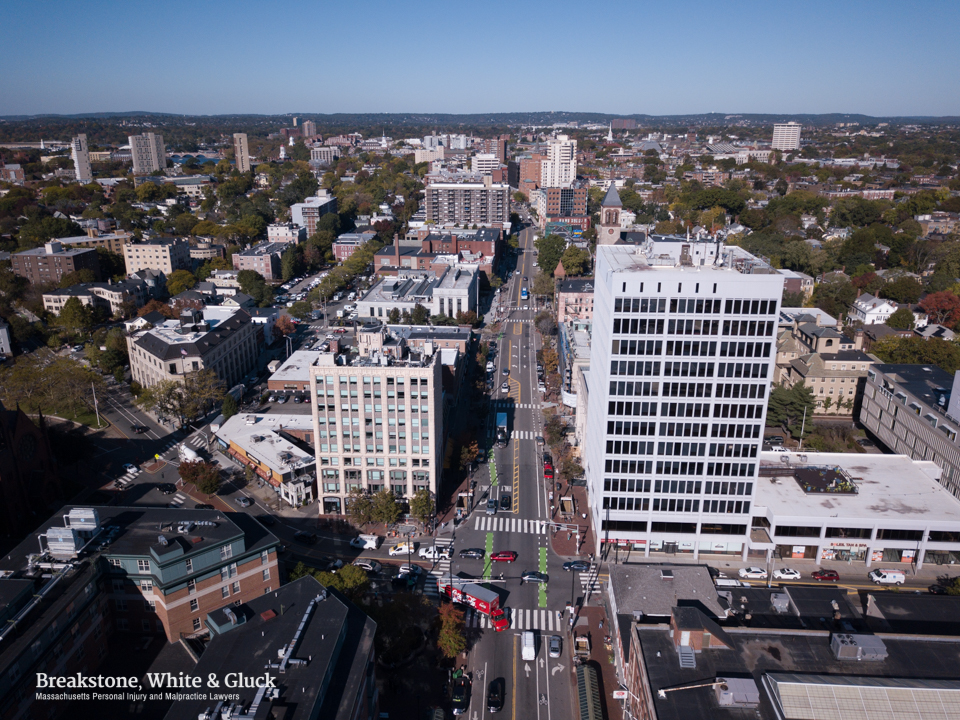
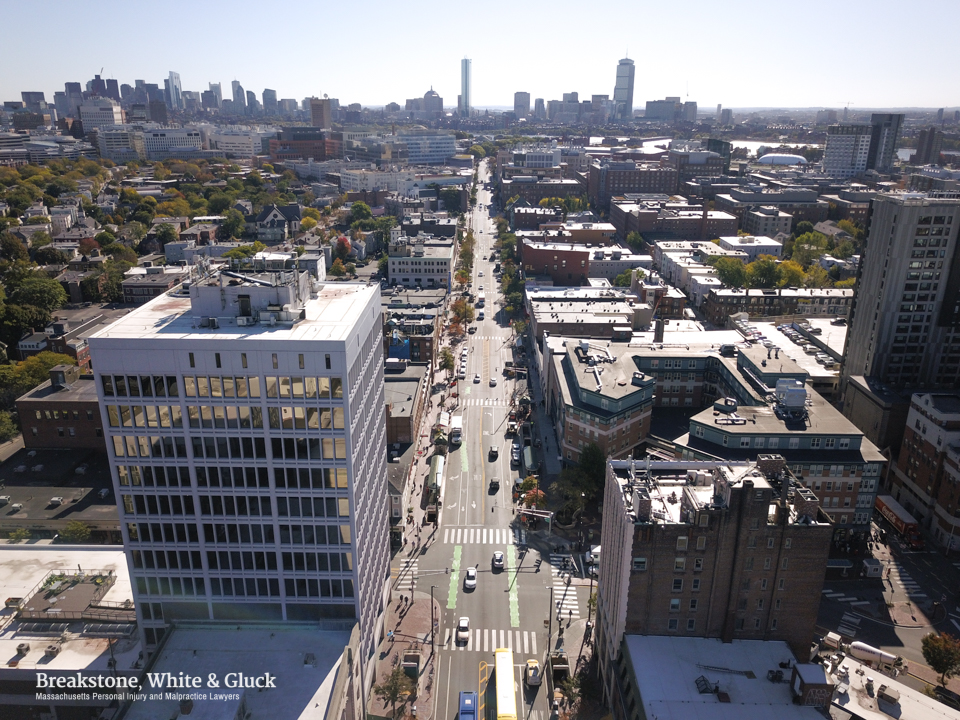
Safety for pedestrians and cyclists is a top concern in Central Square in Cambridge.
Central Square is located around the intersection of Prospect Street, Massachusetts Avenue and Western Avenue in Cambridge. This area is a commuter hub; the Central Square MBTA subway station and bus stop are located here, near Cambridge City Hall. The state of Massachusetts has designated Central Square as an official cultural district, for its mix of theater and arts, restaurants and history. The NECCO building was long part of that history, but these days, 250 Massachusetts Avenue is now the Novartis’ global headquarters. The Cambridge YMCA is there and MIT is nearby.
Over the years, there have been numerous pedestrian and bicycle accidents in Central Square. Central Square was the #1 location for bike crashes in Massachusetts from 2005-2014, according to the Massachusetts Department of Transportation (MassDOT). It was the 5th highest pedestrian crash location. The City of Cambridge has worked to improve safety by improving crosswalks and adding bike lanes across the city. In December 2016, new bike lanes were laid down in Central Square, northbound on Massachusetts Avenue between Sydney and Douglass streets.
We recently went up over Central Square. Please take a look and share this blog with anyone who travels in this area, whether they walk, bike, drive or travel by Uber. From a different angle, we hope you gain a better understanding of the traffic in this area.
We also recently visited Inman Square.
About Breakstone, White & Gluck
At Breakstone, White & Gluck, our Boston personal injury lawyers fight for justice for those who have been seriously injured by the negligence and wrongdoing of others. Our lawyers have been recognized as among the top personal injury and medical malpractice lawyers in Massachusetts and New England. We are committed to protecting cyclists through our Project KidSafe campaign, which has donated over 15,000 helmets to children in the first 5 years. If you have been injured, learn your rights. Contact us today at 800-379-1244 or 617-723-7676 or use our contact form.
Aerial Photos of Cambridge’s Inman Square Show Safety Improvements for Cyclists
We had a fun opportunity to see Inman Square from up high a few weeks ago. Here are some of our photos:
- Inman Square in Cambridge. The Inman Square Fire House – or Cambridge Fire Department Station 5 – is on the left. Central Square is up ahead.
- Looking down Hampshire Street from Inman Square. You can see a few birds made our photo, as did a driver in the bike lane. Not where he is supposed to be. Drivers, please stay out of the bike lane!
- Up high over Inman Square in Cambridge.
- Looking over Inman Square toward the City of Boston.
- Directly over the intersection of Hampshire and Cambridge streets.
The City of Cambridge has worked to improve safety for cyclists in Inman Square, recently adding new separated bike lanes on both sides of Cambridge Street, from Inman Square to Quincy Street, which approaches Harvard Square. This is .7 miles of new bike lanes with paint, flex posts and other temporary materials to help cyclists stand out. And the new lanes pass Cambridge Rindge & Latin, which serves more than 1,900 high school students. Last fall, the city also banned drivers from making certain left turns in Inman Square, after many years of bike crashes followed by a fatal bike accident last June.
Hampshire and Cambridge streets cross at Inman Square. In our photos, you can see a stretch of green bike lanes on Hampshire Street. These intersect with the new bike lanes on Cambridge Street, which are less visible, but they are there.
All the bike lanes look great. We hope they make the commute safer for cyclists and everyone on the roads.
More About Inman Square
Inman Square, known for its distinctive shops and restaurants, comes together around Hampshire and Cambridge streets. But there are several other streets that also meet here, making for a complicated intersection. These include Antrium Street, Fayette Street, Inman Street and Springfield Street. Prospect Street is at the other side of the triangle and the Somerville city line is nearby.
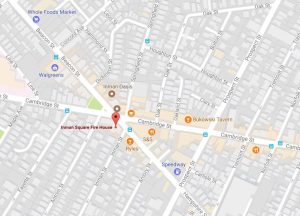
Inman Square on Google Maps.
The Inman Square Fire House – or Cambridge Fire Department Station 5 – and the Mayor Alfred E. Vellucci Community Plaza are two Inman Square landmarks. There are also several banks here and a number of businesses named after the neighborhood: Inman Pharmacy, Inman Square Laundromat, Inman Square Hardware, as well as Inman Square Apartments. Restaurants include City Girl Cafe, 1369 Coffee House and Punjabi Dhaba.
This area is not served by a MBTA subway station, so you have to drive, take the bus, walk or bike. The Central Square MBTA is just over a half mile away and Harvard Square is a mile. Because of this, many choose to bike. If you don’t have a bike, Inman Square has a Hubway bike share station.
Cycling is not allowed on the sidewalk (as in most business areas in Massachusetts, unless it is posted otherwise). But riding on the street is not easy. There have been numerous bicycle crashes here over the years. So many that Inman Square has been named the second top bike crash location in Massachusetts (Source: 2014 Top Crash Locations from MassDOT, dated August 2016). Only Central Square in Cambridge sees more bike accidents. In fact, nine out of the 10 top bike crash locations in Massachusetts are in Cambridge and Somerville, which is why the new protected bike lanes are so important.
After years of bike accidents in Inman Square, there was a fatal bike crash in June 2016, when a cyclist was tragically killed right at Hampshire and Cambridge streets. Amanda Phillips, just 27 years old, collided with a Jeep door which was left open. She was then struck by a landscaping truck. A few months later, another cyclist was killed by a truck crash in Porter Square, raising questions about safety there.
Back in Inman Square, the city banned motor vehicle traffic from making left-hand turns on key streets in October 2016. Motorists were banned from turning left from Hampshire Street onto Cambridge Street – and vice versa. They were also prohibited from turning left on Cambridge Street onto Antrium Street southbound. The city has strictly enforced the ban. The Cambridge Police Department issued more than 200 tickets in the first month of the new restriction; 133 drivers alone were ticketed within a 15-day period.
If you haven’t visited Cambridge in a while, you can expect to see a few changes next time you do. Cambridge Street is just one area with new bicycle lanes. For those who live or work in Inman Square – or commute through – you already know these streets well and have seen the changes firsthand. But please take a look at our photos and share them with others. The more drivers, cyclists and pedestrians understand about this intersection, the more prepared they will be to follow traffic rules, which will reduce bike crashes and pedestrian accidents.
About Breakstone, White & Gluck
Breakstone, White & Gluck is a Boston law firm specializing in personal injury. For more than 25 years, we have committed to supporting cyclists and improving safety conditions in Massachusetts. We support numerous bicycle clubs and advocacy groups, including MassBike, Boston Cyclists Union, Charles River Wheelmen, New England Mountain Bike Association (NEMBA) and the Northeast Bicycle Club (NEBC).In 2017, we finished the fifth year of our Project KidSafe campaign, which has donated more than 15,000 bicycle helmets to children. Wearing a helmet is required by law for cyclists 16 and under in Massachusetts, but we want to encourage every cyclist to wear a helmet every time they ride. We have over 40 community partners helping us send out that message, including in Cambridge and Somerville.
In Cambridge, we partner with the Cambridge Police Department, CYCLE Kids and the Windsor Street Care Center to make donations each year. In Somerville, we have long partnered with Kiwanis Club of Somerville, CYCLE Kids and Somerville Public Schools, Groundwork Somerville and Shift Bicycle Community Collective.
Learn more Breakstone, White & Gluck
Visit our website to learn more about our support for cyclists, our Project KidSafe campaign or to meet our lawyers.


